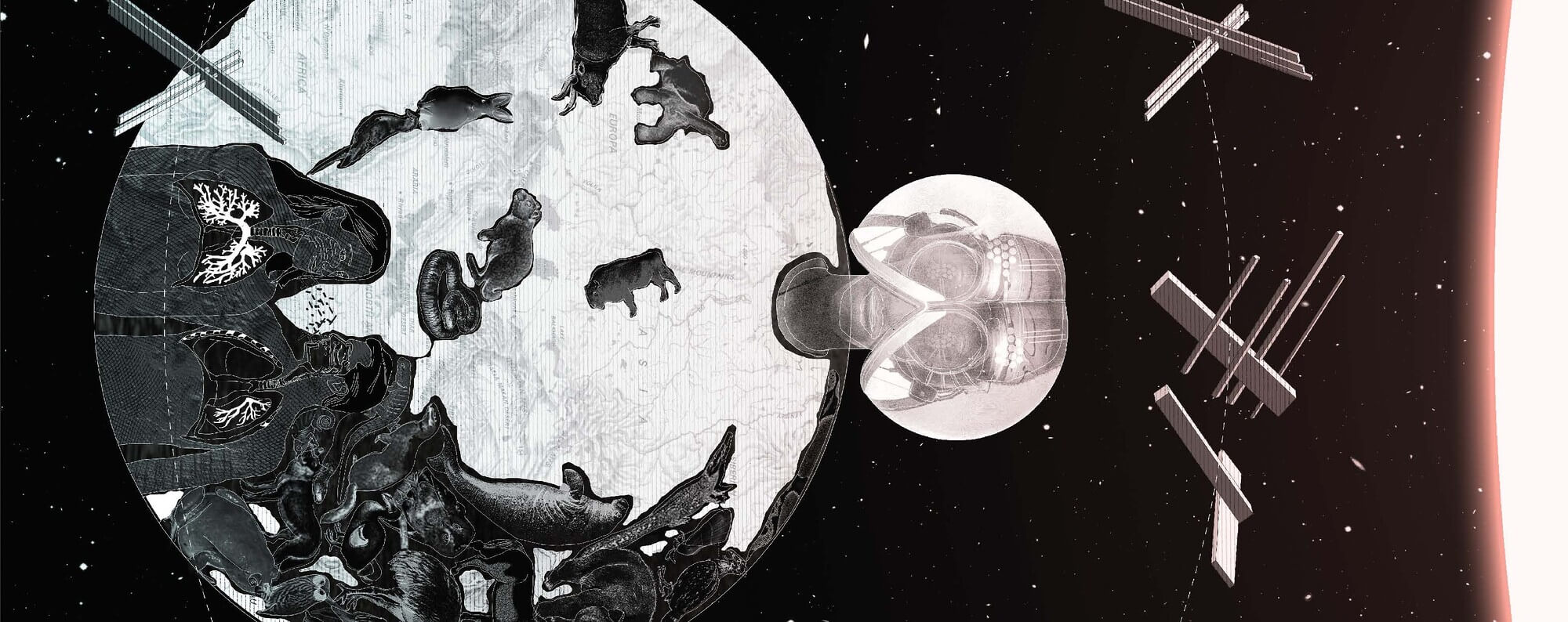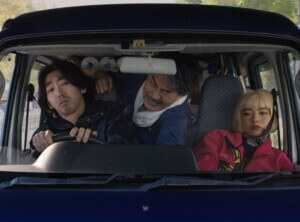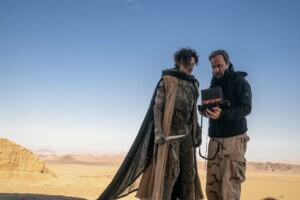The mid-20th-century writer and philosopher Marshall McLuhan first used the phrase “the medium is the message” in his 1964 book, Understanding Media: The Extensions of Man. For McLuhan, the content of a television series or a picture book was less impactful than the way the message itself was delivered. In that same book he distinguished between “hot” media, which overwhelms our critical resistance and washes over us with direct intensity, and “cool” media, the kind that retreats into a detached and hazy distance, beckoning us to participate in completing the picture.
When it comes to messages about climate crises, the form and content are usually both hot. “They use 40 percent of the world’s energy, emit 50 percent of its greenhouse gases,” Brad Pitt tells an audience of architects in the opener for the green design documentary series e² design, produced by AutoDesk and PBS in 2006, “they are the buildings where we work, live, and grow.” The repetition of these statistics and the subsequent imperatives to reduce carbon footprints can have a numbing effect; too much of this heat (climate doom and gloom) often leaves designers feeling powerless and burnt out.
Two recent projects in speculative design research are trying to cool things down in a new way. Planet City was put together by Los Angeles- and London-based architect Liam Young, and The Planet After Geoengineering, by Design Earth, a collaborative practice led by Rania Ghosn and El Hadi Jazairy, of Cambridge and Ann Arbor, respectively. Both projects—each pairing a book and film—use experiments with genre and media to lead us into stories about, as their titles suggest, possible Earths. Instead of a hot insistence about an inevitable future that overwhelms choice and critique in both medium and message, these cool-headed designers choose to ask questions about fears and desires.
The Planet After Geoengineering takes its clear abstract graphics and direct narrative text, from the lineage of children’s books. But this is no simple bedtime story. The fables told here, in short, clipped sentences and richly textured bold, (mostly) greyscale images are as morally ambiguous and deeply unsettling as classic old-school fairytales. Since accidental intervention into Earth’s climate has destabilized things, what might a more intentional attitude toward designing the world look like? Seemingly simple questions like this open to reveal more complicated ones inside. Is carbon sequestration another opportunity for petroleum companies to profit off disaster? Would de-extinction and re-wilding the tundra with mammoths lead to unforeseen consequences? Could weather control initiatives threaten water supplies for millions of people? If humans eventually build a climate-safe redoubt in a protected greenhouse, what happens to those left outside? It’s all grim (as in the Brothers Grimm). There are no easy answers here.
The book, and its animated companion (available as a short film on Design Earth’s website), are similarly layered. The simple forms and bold cutouts draw us in, and once entranced, audiences familiar with speculative architecture will recognize swarms of sly references to design history floating in the clouds. As a coda, supplemental essays by Kathryn Yusoff, Benjamin Bratton, and Holly Jean Buck raise further questions, as these writers open up the terms of the book’s title and premise.

If Design Earth sits us down for an uncanny children’s storytime, Liam Young’s Planet City tempts us with something like a grownup’s weekend Netflix binge. Here, the touchstones are science fiction, fantasy, and magical realism. Young is engaging in speculative foresight here, and he’s invited us to explore his new planet. This project takes place in an unspecified future era in which all of humanity has decided to restore Earth to a state of natural balance by relocating into a vast solitary city of 10 billion. In the book, the consequences of that provocative premise are lushly rendered in a series of cropped vignettes produced by Young and his collaborators. These show a somehow serene agglomeration of dozens of kinds of technology, architecture, and landscape, bathed in cool evening air and warm pink light.
Planet City is not presented in a site plan, or from an aerial view, and we get no sense of the whole place or the big picture; this is by design. Worldbuilding happens via a series of moments—particular aspects and situations—and that method sets the template for the text as well. Like Design Earth, Young has invited others to write about his planet too, and a series of short and medium-length pieces draw out more specifics. In fictional narratives or in nonfiction speculation, the writers show how the law might work, how traditions would be passed down, how the restoration of the rest of the world might be taking place. There are facts and figures, right there on the book’s cover (2,357 algae farms! 6,396,867 dentists!), but once those are dispensed with, it is the human experiences here that stick with us—the family life, the gatherings, the rituals, and the outfits.
These last two take on a special role in the film accompaniment of Planet City, suitably cool and abstract. There is no narrative here, just slow pans and frozen, pregnant moments, animated with potent original music by Forest Swords and cut with scenes of dancers in fantastic costumes produced under costume director Ane Crabtree. The short film is an ambient depiction of an eternal festival procession that winds continuously through the city. With so many cultures in one place, every day is a holiday or a holy day, and this is a party fit for the end, or the beginning, of the world.
These two projects seen side by side show us some of the best and the worst possibilities for a future in which humans work to remake the planet. But these hopes and fears have never looked so cool. Young’s Planet City could be a teaser for a show that would sit among the best of the streaming prestige television spectacles, like Game of Thrones or The Expanse. Design Earth’s The Planet After Geoengineering could be the start of a whole new library category: the speculative dystopian children’s picture book.
These practitioners are no strangers to experiments with media and genre. Young has worked extensively in film before, but has also made work as a drone choreographer, a book series editor, a teacher, and, with his studio Unknown Fields, as an explorer and tour guide of the edges of worlds. And Design Earth has used the medium of sculpture, installation, and jewelry to dream and remake new planets and new spaces.
Other architects, designers, and planners who want to get their messages and warnings out to the world at large should take note of these mediums and methods. We don’t read the newspaper, McLuhan wrote, we step into it like a warm bath. Hot or cool, to reshape Earth, these multimedia projects about climate crisis suggest, designers will have to get out of their comfort zones. These two projects are worth immersing oneself in.
Fred Scharmen teaches architecture and urban design at Morgan State University. He is the co-founder of the Working Group on Adaptive Systems, an art and design consultancy in Baltimore, Maryland. Fred’s writing and criticism have appeared in DOMUS, CityLab, and Slate. His book, Space Forces: A Critical History of Life in Outer Space is out now from Verso.










